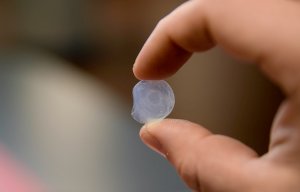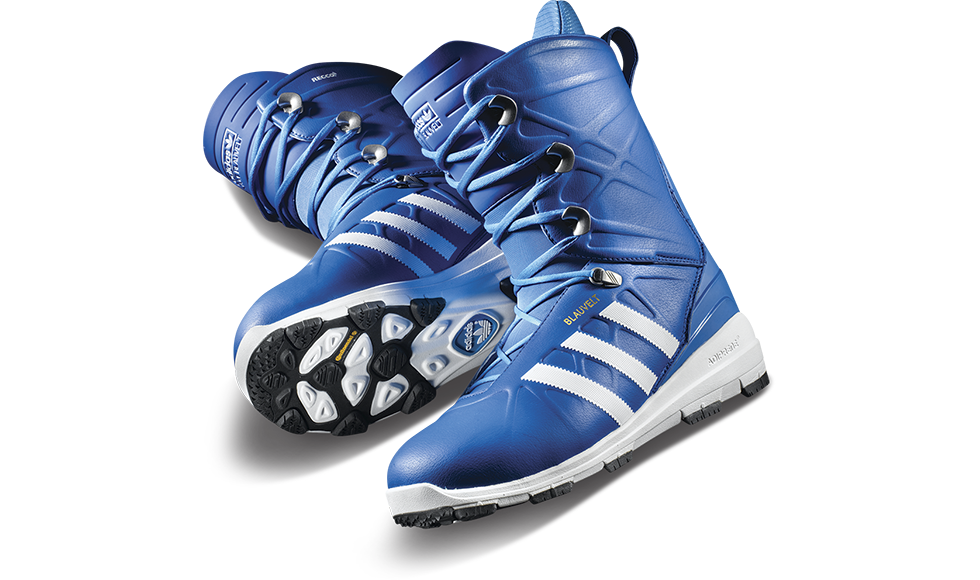
PrimaLoft brings aeronautical material to outerwear products
USA based Aerogel technologies Inc. is using technology developed for NASA in its Aerotherm aerogel insulation products for apparel and footwear.

2nd September 2014
Innovation in Textiles
|
Boston, MA
US based Aerogel Technologies Inc., is reporting strong sales of its Aerotherm Aerogel Insulation range of high performance insulation products this year and says it is bringing technology developed for outer space applications to everyday life apparel and footwear.
The company’s nanoporous, flexible aerogel based products, which provide superior insulation performance in outdoor apparel and footwear, are making strong in-roads into major outdoor and footwear brands in the USA and around the world. The Boston, Massachusetts based company includes adidas, Red Wing, Cabelas, The North Face, L.L Bean, Salomon, Millet, Rocky S2V and Peak Performance amongst its prestigious clients.

Aerogels were developed in the 1930s and were first used as insulating materials in National Aeronautics and Space Administration (NASA) and industrial applications. However, today’s Aerotherm aerogel insulations are nanoporous materials comprised of an amorphous silica gel impregnated into nonwoven flexible substrates.

Made up of more than 90% air, aerogel is a highly effective insulator, which is thought to have the lowest thermal conductivity of any solid. The Aerotherm product range uses silica aerogel to produce a strong, durable, and flexible material that it says is 2 to 8 times more effective than traditional thermal insulation.
Sounds interesting right? Watch the movie below to hear what scientists have to say about aerogels. They are amazing.
Although Aerotherm ultra-thin and highly resilient nonwovens webs are almost entirely made up of air they actually resist compression under load and retain their thermal performance even when high pressures are applied.
Tests have shown that Aerotherm aerogel insulations exhibit the lowest thermal conductivity when compared to foams, fiberglass and lofted polyester insulation.
Aerotherm is produced using Northborough, MA based Aspen Aerogels aerogels insulation products. The original Aspen Aerogels material is processed to obtain 2-5 mm thin panels and the material is encapsulated in a thin membrane to prevent leakage of aerogel. Aerotherm insulation material can then be cut out according to a customer’s design and Aerogel Technologies has also introduced universal panels for use in apparel and footwear applications.

Aspen Aerogels have been used in outdoor apparel and gear and footwear in some of the most challenging environments on the planet and in major competitions and events such as climbing Mount Everest, walking the Great Wall of China, a 135 mile marathon in the extreme heat of Death Valley, and in a world record North Pole Marathon.
To give you an idea of how the extreme the performance of these materials is, and to demonstrate their insulation effectiveness, watch the Aspen Aerogels movie below. Be sure to look out for some amazing high and low temperature experiments involving an oxyacetylene torch with a flame temperature of 1000 degrees Celsius and a block of dry ice with a temperature of minus 78.5 degrees Celsius.
As Aerogel Technologies’ Global Director of Sales and Marketing Jon Klein explains: “Aerotherm is a new cutting edge green nanotechnology thermal insulation that can be used in everyday products. Aerotherm’s performance is based on the unique properties of Aerogel, which is the main component of Aerotherm. Aerotherm will protect from extreme cold to extreme heat conditions.”
“Unlike traditional lofted insulation, Aerotherm does not require loft to maintain its thermal performance and its insulation properties are never affected or compromised by compression,” Klein adds. “These values make Aerotherm an ideal choice to be used in the regions of the body that undergo compression, friction and stress, including under foot or insoles, seat of the pants, knees, elbows, back, chest.”
The main advantages of the Aerotherm over other types of thermal insulation are:

Other insulation materials require loft to achieve their insulation value and according to Jon Klein, pressure causes these materials to compress dramatically and lose their loft along with their insulating capacity.
By way of contrast, Aerotherm aerogel insulation does not need loft to deliver its high insulation value and it barely compresses, even in a foot bed under adult weight. At 15-psi pressure, aerogel insulation retains over 95% of its original thickness and over 97% of its original thermal performance. “No other insulation can match this performance,” claims Klein, adding:
“Aerotherm aerogel insulation is a high performance insulation used in place of lofted insulations. Typically only 2mm of Aerotherm aerogel insulation is required to increase the thermal performance of outerwear 2 to 3 times over typical down or lofted polyester, especially in compression areas.”
Aerotherm aerogel insulation’s thermal performance is not affected by compression. Aerotherm aerogel insulation has the highest R value per unit thickness of any insulation, translating into the highest practical Clo value per unit thickness (thermal resistance of clothing as it relates to human comfort). This greatly reduces the relative weight of a garment required to meet a given Clo value.
The company recommends that Aerotherm be used in conjunction with a lofted insulation in high compression stressed areas such as knees, elbows and the seat of the pants. Using the material throughout the garment is not recommended as over heating can occur. The bulk of a garment can be reduced by almost 50% by incorporating Aerotherm, which meets the current needs of brands for lightweight non-bulky products. Flexibility and softness are also said to improve with laundering.
Aerotherm aerogel insulation is particularly suited to extreme weather applications due to its thermal performance and resilience. However, applications are wide ranging.

Leading areas of application for Aerotherm are footwear, general outerwear including ski gloves to dress gloves, sportswear, accessories, extreme weather gear, water bottles, medical packaging and outdoor gear including backpacks, sleeping pads, sleeping bags and tents.

It also has a number of applications in PPE (Personal Protective Equipment), including safety clothing, footwear and gloves.
 Manufacturing and distribution
Manufacturing and distributionAerogel Technologies’ nonwoven substrate is supplied in roll format and then slit and cut into application specific panels at the company's manufacturing facility in South Korea. The material is then encapsulated into a polyurethane membrane to enable efficient handling and easy incorporation into apparel and footwear.

The company works closely with designers and product developers at major brands and retailers to provide customised solutions, even going as far as helping develop prototypes and manufacturing shaped panels for specific applications. Panels are shipped to customers with full instructions for sewing and/or bonding into apparel or footwear.

Aerogel Technologies / Aerotherm Brand has a global presence from the US to EU and Asia.

At the 2014 ISPO in Munich new products from Millet and Peak Performance featuring Aerotherm insulation received ISPO Winner 2014 awards. Millet received the award for its MXP down TEK jacket and pants and Peak Performance was recognised for its HELO AERO LINER.
For further information about Aerotherm aerogel insulation, please contact:
Jon Klein
Global Director of Sales and Marketing
AeroTherm® aerogel insulation
Boston, MA 1-508-330-0171

Business intelligence for the fibre, textiles and apparel industries: technologies, innovations, markets, investments, trade policy, sourcing, strategy...
Find out more